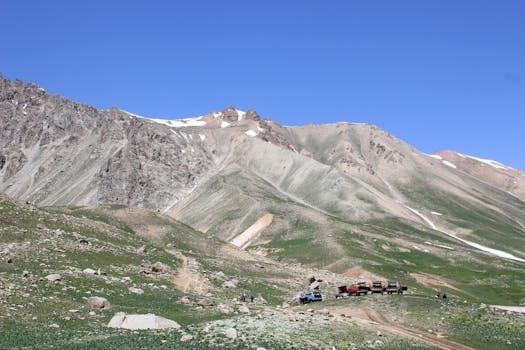Extreme Survival: Navigating Earth’s Most Inhospitable Environments
If adventure and adrenaline rush through your veins, then you’ve probably dreamt of exploring the world’s most inhospitable environments. From blistering deserts to freezing ice caps, these extreme locations test not only our physical strength, but also our mental resilience. However, in these harsh landscapes, the key to survival lies in navigation. In this article, we’ll delve into the world of extreme survival and uncover the secrets to navigating Earth’s most unforgiving environments.
The Challenges of Extreme Survival
Before we dive into the specifics of navigation, let’s first understand the challenges of extreme survival. Earth’s inhospitable environments pose a multitude of threats that can be deadly if not approached with caution and preparation. For instance, the scorching heat of the desert can cause dehydration and heatstroke, while the subzero temperatures of the arctic can lead to hypothermia. Moreover, these harsh conditions often come with limited access to resources, like food and water, making it crucial to have navigation skills to reach safety.
Understanding Your Terrain
The first step in navigating Earth’s most inhospitable environments is to understand your terrain. Often, these locations are vast and uncharted, with no clear paths to guide your way. In a desert, for example, the shifting sands and lack of vegetation can make it challenging to determine direction and distance. In contrast, the icy expanses of the arctic might have hidden crevices and treacherous ice sheets, making it vital to map out your route beforehand.
To get a better understanding of your terrain, make use of topographical maps and satellite imagery. These resources can help you identify landmarks, potential hazards, and possible shelters along your route. Additionally, take note of any natural markers, like rock formations or prominent trees, that can serve as a compass to guide your way.
Using Navigation Tools
While a map and compass are essential navigation tools, they might not be the most convenient in extreme environments like the desert or arctic. Unpredictable weather conditions and rough terrain can make handling these instruments a challenge. Instead, consider using navigation tools that are designed specifically for extreme survival situations, like a GPS device or an altimeter.
GPS devices, in particular, have become an indispensable tool for outdoor enthusiasts. Not only do they provide accurate directions and track your route, but they also have features that can help locate nearby resources, like water sources or shelter. Some GPS devices even come equipped with personal locator beacons that can send out distress signals in case of an emergency.
Mastering Navigation Techniques
While navigation tools can be lifesaving in extreme environments, it’s essential to have backup strategies in case of equipment failure. Mastering navigation techniques like using celestial bodies, tracking the sun’s movement, and using a watch as a makeshift compass can come in handy in these situations. These techniques require some practice, but they are valuable skills to have in your survival toolkit.
Besides these traditional navigation methods, technological advancements have also introduced other means to navigate extreme environments. For example, drone technology is now being used to map out terrain from above, providing a bird’s eye view of the area. Additionally, some adventurers have turned to virtual reality headsets that can simulate an environment, giving a better understanding of potential hazards and landmarks.
Be Mindful of Your Surroundings
Surviving in extreme environments requires constant vigilance and awareness of your surroundings. Regularly check your surroundings for potential hazards, like hidden caves, steep cliffs, or quicksand. Be mindful of any changes in weather conditions and adjust your route accordingly. Additionally, keep an eye out for signs of life, like animal tracks or fresh water sources, that can help you find your way to safety.
Don’t Take Unnecessary Risks
While it’s essential to be resourceful and adapt to your surroundings in extreme environments, it’s equally crucial to avoid taking unnecessary risks. Recognize your limitations and don’t push yourself beyond what you can handle. Remember, navigation skills can only get you so far, and if your gut instinct is telling you to turn back, then it’s best to listen.
In conclusion, navigating Earth’s most inhospitable environments is an adventure that takes courage, strength, and skill. By understanding your terrain, using the right tools and techniques, and keeping a vigilant eye, you can rise above the challenges and navigate your way to safety. So, the next time you embark on an extreme adventure, remember these navigation tips, and you’ll be better equipped to handle whatever Mother Nature throws your way.










